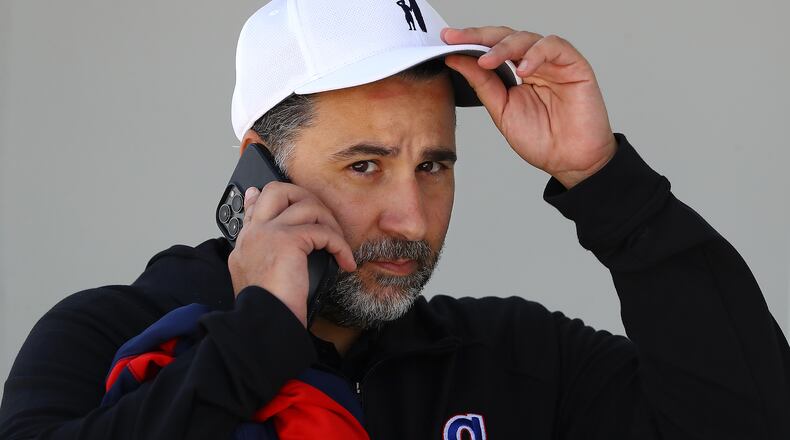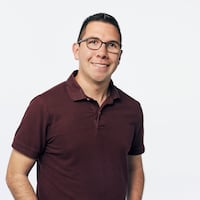SCOTTSDALE, Ariz. – Finally, the decisions are official. The offseason is underway.
The Braves exercised their option on Charlie Morton, but declined the options on Eddie Rosario, Kirby Yates, Collin McHugh and Brad Hand.
Now the question is: Why?
You are probably wondering why the Braves made these decisions, and what comes next. Let’s break it all down.
Here’s an analysis of the situation:
Why did the Braves bring back Morton?
Both fans and pundits will certainly debate whether $20 million is too much for Morton, who turns 40 on Nov. 12. But if you look around the industry, $20 million might be great value for Morton, who will be on a one-year deal.
The question the Braves had to ask: Did they want to lock in that $20 million now by bringing back Morton?
Marcus Stroman recently opted out of a contract with the Cubs that would’ve paid him $21 million for 2024. The Cubs also exercised Kyle Hendricks’ $16 million option, and Morton is much better than Hendricks. In 2023, the Cardinals’ Adam Wainwright, who retired at season’s end, made $17.5 million at 42 years old. Last winter, the Rangers signed Nathan Eovaldi, who has similar career numbers in terms of the ERA, to a two-year, $34 million deal.
The point: If you step back and look at it, $20 million probably isn’t an overpay for Morton – especially when considering his value in the clubhouse, where he’s beloved.
You also must consider the Braves’ circumstances: Kyle Wright is out for all of 2024 after undergoing shoulder surgery, which meant president of baseball operations Alex Anthopoulos was going to need to replace him. The Braves only had Max Fried and Spencer Strider at the top of their rotation.
Bringing back Morton means the Braves must worry about one less rotation spot. Yes, the Braves should – and probably will – go to free agency or the trade market to add more starting pitching. They need to try to continue bolstering the rotation.
But this is the other reason exercising Morton’s option was smart: No one knows how free agency or the trade market will play out. It seems many teams are in dire need of starting pitching this winter, which will drive up costs.
The Braves likely aren’t going to find a great starting pitcher on a one-year deal, like they have with Morton – because all of those free agents will seek multi-year contracts. If the Braves risked losing Morton, they would’ve had even more work to do, and at a higher cost.
Plus, Morton’s teammates love him. He is a terrific influence for Fried and Strider.
Morton suffered a right index finger sprain and didn’t pitch in the NLDS, but his finger only needed time. It didn’t require surgery. He’ll be healthy.
Credit: HYOSUB SHIN / AJC
Credit: HYOSUB SHIN / AJC
What about the others?
If looking from the outside, there were a couple close calls in the rest of the batch of options.
You could’ve justified Rosario for $9 million, or Yates for $5.75 million, because adding impact talent is expensive.
But it seems the Braves didn’t want to tie up too much money this early in the offseason.
It would’ve cost them $14.75 million to exercise the options on Rosario and Yates. That’s money spent right now. The Braves can probably benefit from saving it while they let the offseason play out a bit.
Make no mistake: It appeared they liked those players. It wouldn’t be shocking to see the Braves linked to any of them this winter. They could still bring them back. The door isn’t closed.
Declining Hand’s $7 million option seemed like the obvious call. McHugh at $6 million appeared to be a bit expensive for his performance.
Declining Rosario, of course, means the Braves aren’t guaranteed to run it back with the same lineup that tied and set records. However, he was probably the most replaceable part of that batting order.
Credit: Jason Getz / Jason.Getz@ajc.com
Credit: Jason Getz / Jason.Getz@ajc.com
One big takeaway
As you review the Braves’ decisions, this takeaway becomes clear: They exercised the option on a player in an area of need, and declined the others.
The Braves need starting pitching this winter, and $20 million wasn’t a wild overpay for Morton, so they brought him back.
Their offense is already a juggernaut. They can handle left field as the offseason progresses.
Their bullpen also should be good again. They have four good late-inning relievers, and it could be five or six depending on how Tyler Matzek and Dylan Lee look once healthy.
The Braves have prospects AJ Smith-Shawver and Hurston Waldrep as two future rotation mainstays, if all goes well. But those two, and others, are depth for them, and they know they cannot shuttle that depth into the rotation, because it would leave them exposed. In 2023, the Braves used 13 different starting pitchers, not including the three relievers who opened games. Depth is key.
It makes sense that the one option they exercised came in their greatest area of need.
What’s next?
Yes, it took $20 million, but bringing back Morton streamlines the offseason for Atlanta. They don’t have to completely shell out dollars or prospects for starting pitching, though they will still seek it.
Sonny Gray, who on Monday received the qualifying offer, is an intriguing option, and could cost less than the top free-agent starters. Blake Snell, Jordan Montgomery and Aaron Nola are other starting pitchers who will earn buzz this offseason, but the price tags could be high.
Still, the Braves have been known to do their due diligence on free agents – even stars who might be out of their price range. They keep their options open.
Credit: AP
Credit: AP
But it’s a baseball tenet that building a rotation through free agency costs a ton. By having Morton in the fold already, the Braves can be more choosy in making an impact addition.
In terms of left field, it’s fair to wonder whether Anthopoulos is eyeing a long-term solution via trade or free agency. If so, it would mean Atlanta’s entire lineup would be set for years to come. The free-agent outfielders range from Cody Bellinger, who would cost a lot, to Tommy Pham, Lourdes Gurriel Jr. and Teoscar Hernandez, who probably won’t receive as much money.
But the fact the Braves declined four of the five contract options makes sense. It’s wise for them to keep their optionality and flexibility for this offseason instead of tying up money.
This way, there are more possibilities.
About the Author
Keep Reading
The Latest
Featured




